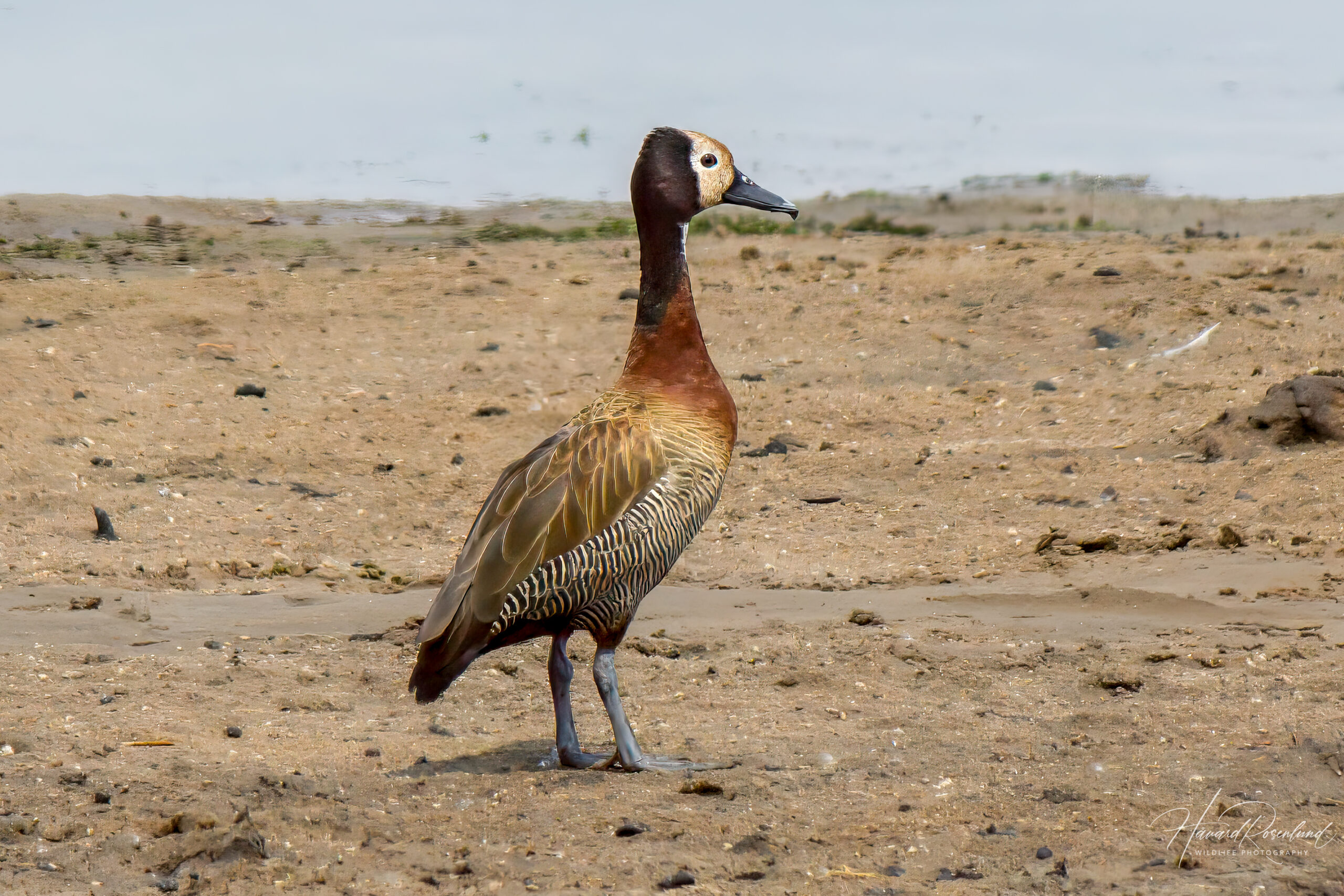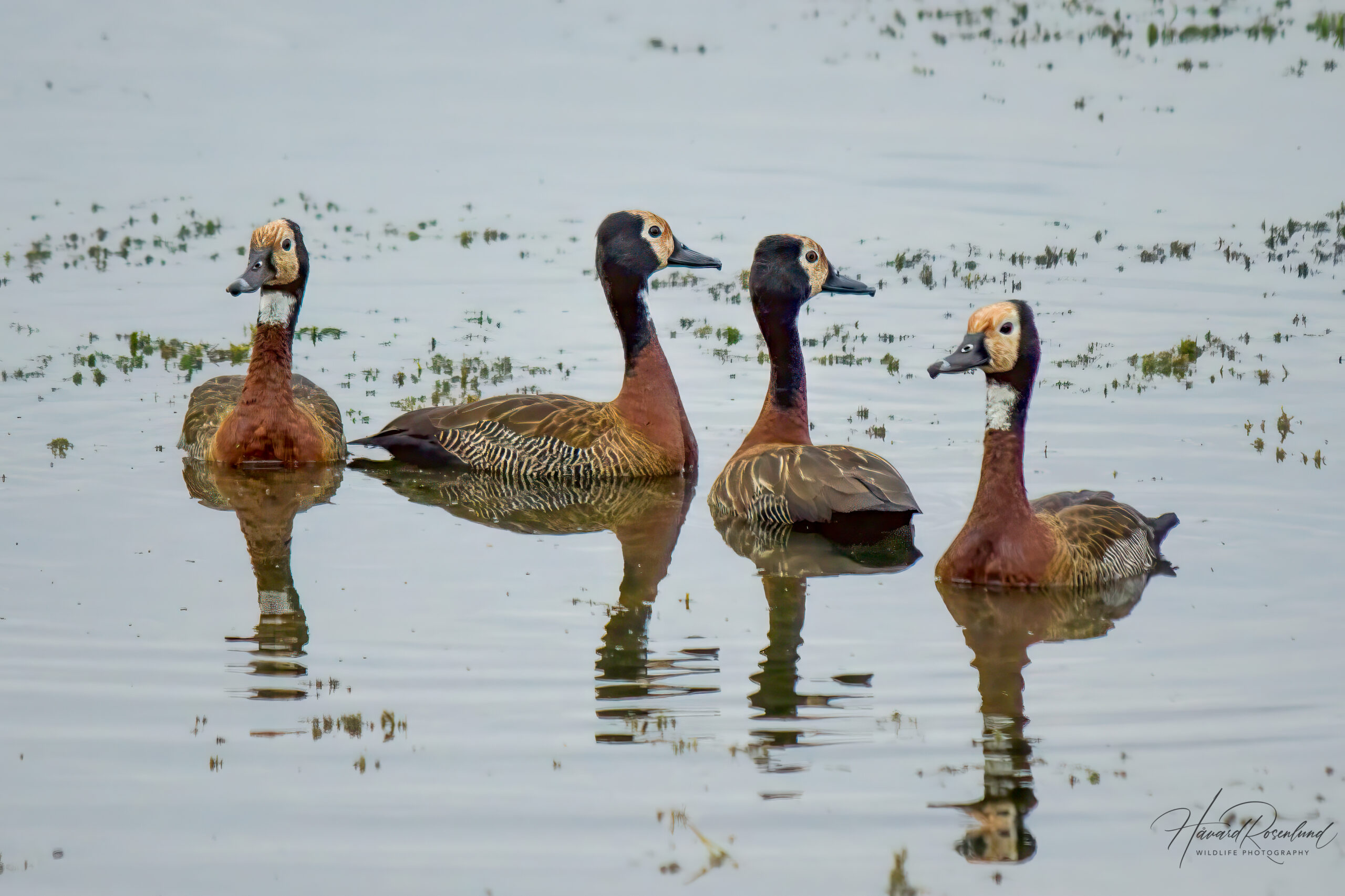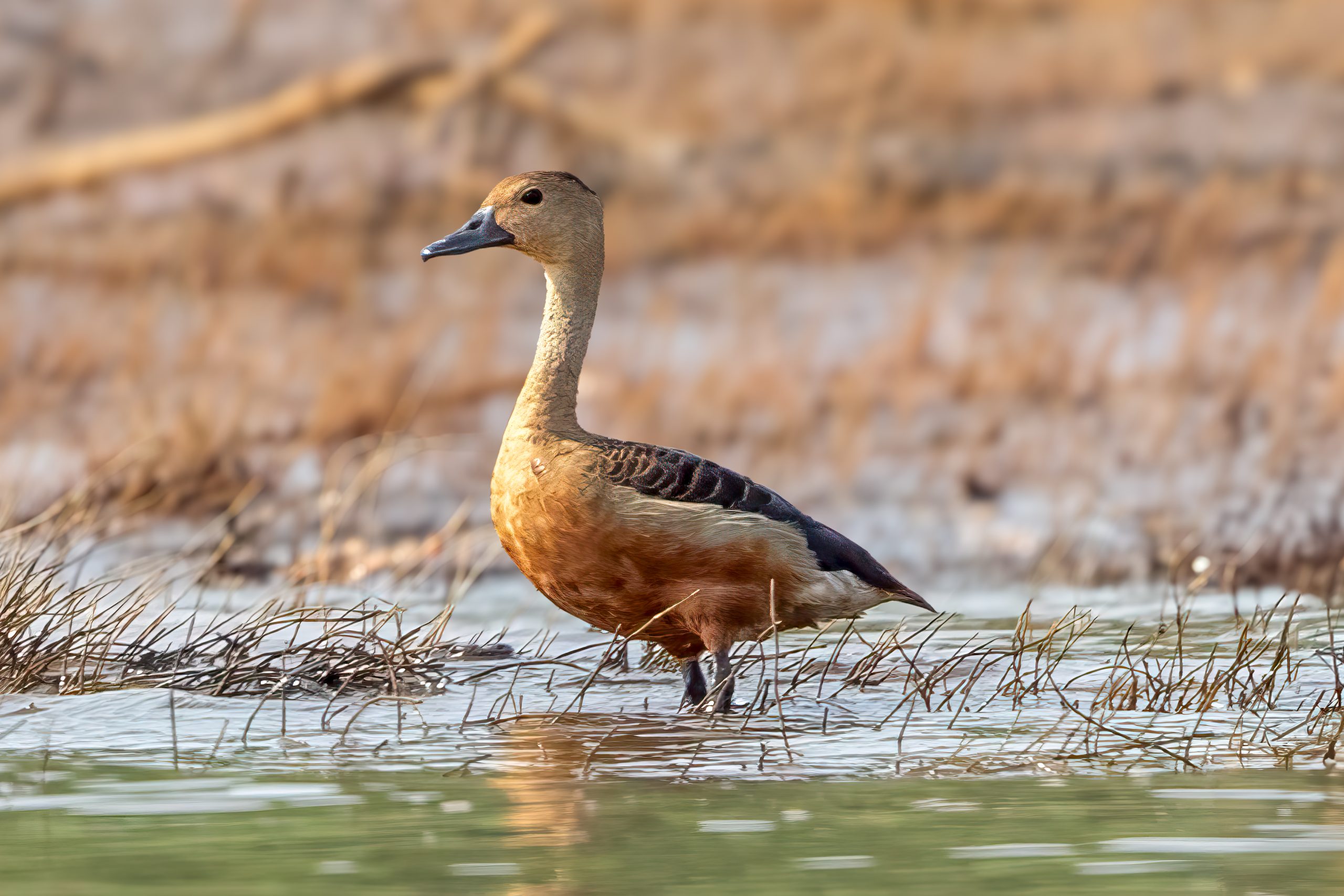Description
The white-faced whistling-duck (Dendrocygna viduata) is a distinct species of waterfowl, easily recognizable by its striking appearance. It has a widespread range across sub-Saharan Africa and much of South America. This species is characterized by a long neck, a white face with a black crown, and a mostly brown body. These ducks typically measure about 42 to 48 cm (16.5-18.9 in) in length. They have long legs and broad wings, which aid in their proficient swimming and flying abilities. Whistling-ducks are distinguished by their unique whistling call, which is often heard in the early morning or at dusk. These are highly social birds, frequently seen in large flocks that can number in the thousands. Unlike many other duck species, whistling-ducks are also known to perch on trees, utilizing their long toes to grasp branches.
Diet & Habitat
This species thrives in a variety of wetland habitats, including shallow lakes, marshes, and rice fields. They are known for their adaptability to different water bodies, often found in both natural and artificial aquatic environments. The diet of the white-faced whistling-duck primarily consists of seeds, grains, and aquatic plants. They are also known to consume small aquatic animals and insects. Their feeding behavior is unique, as they often feed at night, dabbling at the water’s surface or upending to reach food.
Nesting
Breeding season for these ducks varies geographically, but it generally coincides with the rainy season. They exhibit monogamous behavior, with pairs forming strong bonds. Nesting typically occurs in dense vegetation near water, where they construct nests out of reeds and grasses. The female lays between 8 to 12 eggs per clutch, with an incubation period of about 24 to 30 days. Both parents partake in incubation duties. The ducklings are precocial and are able to leave the nest shortly after hatching. Fledging time, the period from hatching to flight capability, is approximately 8 to 9 weeks.
Status
The white-faced whistling-duck is widespread and common across both sub-Saharan Africa and South America and the species is not at immediate risk of decline. It is listed as least concern on the IUCN Red List. However, habitat loss due to wetland drainage and pollution poses as potential local threats. Conservation efforts are focused on habitat preservation and monitoring population trends.






